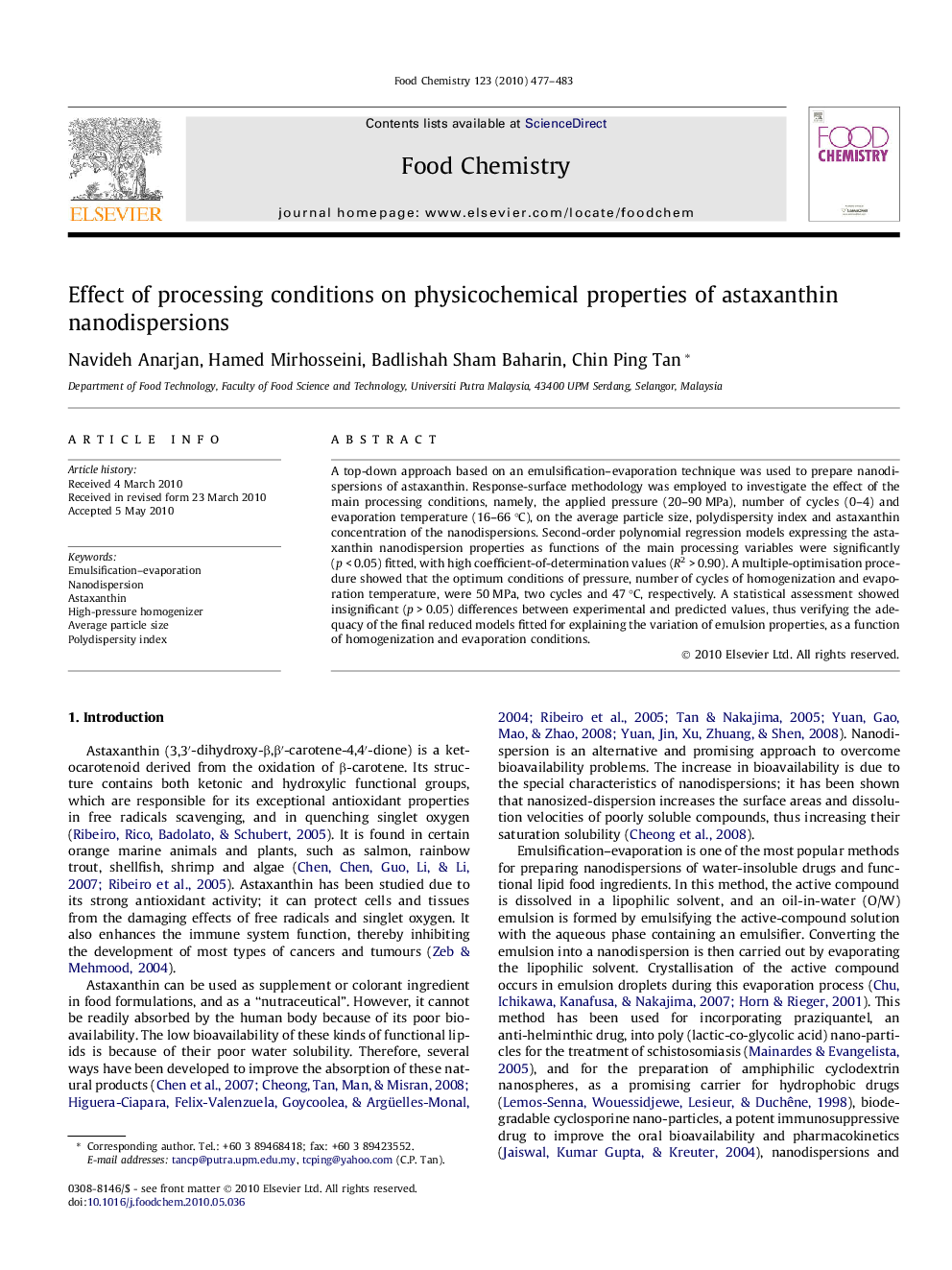| Article ID | Journal | Published Year | Pages | File Type |
|---|---|---|---|---|
| 1187869 | Food Chemistry | 2010 | 7 Pages |
A top-down approach based on an emulsification–evaporation technique was used to prepare nanodispersions of astaxanthin. Response-surface methodology was employed to investigate the effect of the main processing conditions, namely, the applied pressure (20–90 MPa), number of cycles (0–4) and evaporation temperature (16–66 °C), on the average particle size, polydispersity index and astaxanthin concentration of the nanodispersions. Second-order polynomial regression models expressing the astaxanthin nanodispersion properties as functions of the main processing variables were significantly (p < 0.05) fitted, with high coefficient-of-determination values (R2 > 0.90). A multiple-optimisation procedure showed that the optimum conditions of pressure, number of cycles of homogenization and evaporation temperature, were 50 MPa, two cycles and 47 °C, respectively. A statistical assessment showed insignificant (p > 0.05) differences between experimental and predicted values, thus verifying the adequacy of the final reduced models fitted for explaining the variation of emulsion properties, as a function of homogenization and evaporation conditions.
